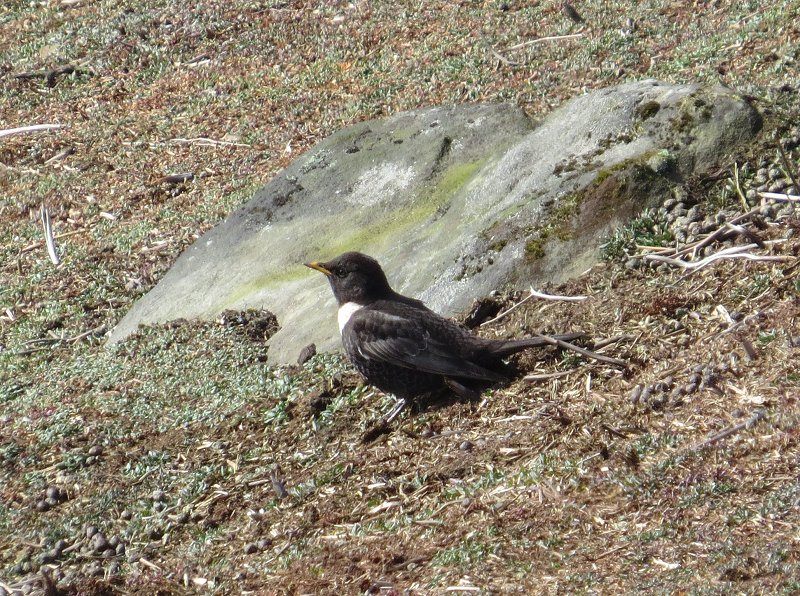
First arrival in Rosedale at Nab Scar on 22nd March 2015. (© Vic Fairbrother)
Back to the Home page
[Ed: Ken Hutchinson has kindly allowed us to offer the 2015 report on Ring Ouzels in Rosedale and other parts of the North York Moors, written together with Victor Fairbrother. The report can be downloaded as a PDF of approx 1Mb.]

First arrival in Rosedale at Nab Scar on 22nd March 2015. (© Vic Fairbrother)
To give you a taste of the report here are the summary and introduction,,,,
The 2015 survey was the 16th year in which a detailed study had been made of the Ring Ouzel Turdus torquatus (RZ) population in the North York Moors National Park. The findings of these studies were submitted to various bodies including the North York Moors National Park Authority, the RSPB Ring Ouzel Study Group, Natural England (York office) and the land-owners and head keepers of Spaunton and Rosedale estates.
The 2015 season marked 14 years of unbroken study in the Rosedale area, only the foot and mouth outbreak in 2001 and the subsequent closure of the moors prevented continuous study since the start of the project in 1999. As in previous years the 2015 survey concentrated mainly on the Rosedale area of the North York Moors, an area of around 25 square kilometres. Visits were also made during late summer to locate Ring Ouzels prior to migration.
The study over these years has revealed much new information about the numbers and distribution of Ring Ouzels on the North York Moors, how thinly scattered they are and how small the population is at the start of the new millennium. In the Rosedale core study area, the data gathered has provided an insight into clutch sizes and the number that successfully hatch and fledge. In addition, there is now a better understanding of the normal levels of predation as well as the pairs that build replacement nests and produce second broods. However, there is still an absence of data on first-year survival and adult return rates, and their dispersal within Rosedale and the wider North York Moors; or indeed other areas of the country. These are now known to be key factors in the survival of this isolated and most easterly population in Britain. For the first time this year, during routine monitoring of nests, a small number of chicks were fitted with colour rings in an effort to begin to answer some of these questions.
Finally, the north-west and east side of Rosedale was covered by Vic Fairbrother and the west side by Ken Hutchinson. A single visit was also made to Farndale and Esklets following last year’s success when three nests were located in these areas.
© Ken Hutchinson, Vic Fairbrother, Ryedale Natural History Society 2015
Back to the Index page